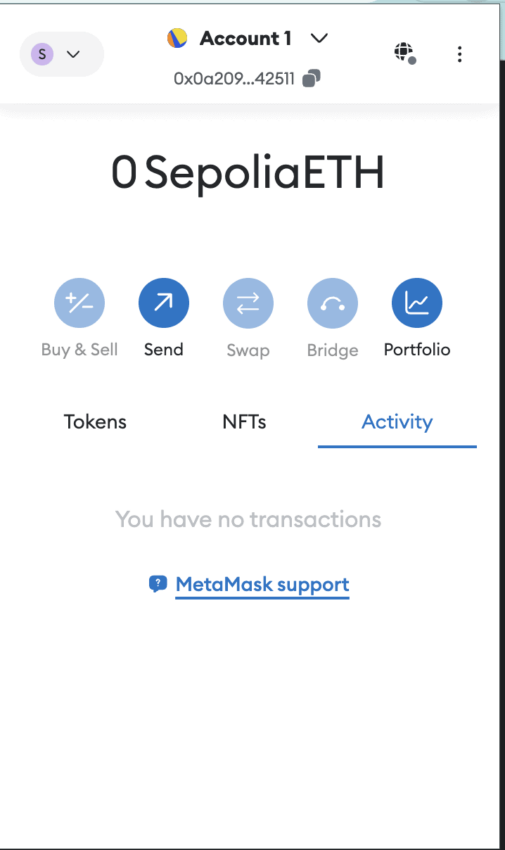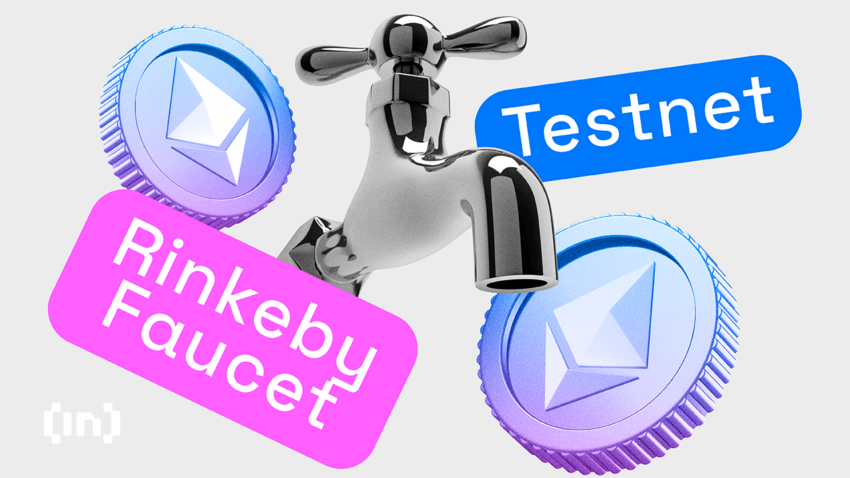The Ethereum blockchain is arguably the biggest developer-centric ecosystem dealing with decentralized applications (DApps) and decentralized finance (DeFi). Yet, developers looking to Ethereum to build usable web3 resources do not simply start building on the mainnet. Instead, they rely first on testnets. This guide discusses one popular testnet, Rinkeby. Read on to learn about this vital Ethereum test network.
- Unpacking the Rinkeby Faucet and testnet
- The role of PoA in influencing the quality of Rinkeby testnet
- Comparing Rinkeby with other testnets
- What is the Rinkeby faucet?
- Tracking Rinkeby transactions
- Rinkeby Faucet and testnet: Notable advanced elements
- Rinkeby vs. competitors
- Can I still use Rinkeby?
- How important are testnets in blockchain development?
- Frequently asked questions
Unpacking the Rinkeby Faucet and testnet
Testnets are used to support test transactions. Developers user testnets to try out implementations that use frameworks such as Truffle and the Solidity programming language. This allows DApps to be tested and improved without developers encountering the financial burden and risks associated with the main Ethereum blockchain.
Rinkeby is one such testnet. Even though the Rinkeby testnet and Rinkeby faucet were deprecated as of 2024, assessing their role in facilitating robust DApp development can help both new and advanced developers better understand Ethereum test networks.
History and development
The Rinkeby testnet for Ethereum DApp testing came into existence in 2017. It focused specifically on smart contract testing and quickly became vital to the Ethereum development environment. Rinkeby operated as a proof-of-authority (PoA) testnet at a time when Ethereum itself was proof-of-work (PoW), as was Ropsten, one of the other popular testnets.
Over the years, the Rinkeby network emerged as a particularly stable option. The network offered something similar to a “Controlled Node Validation” environment and supported predictable testing scenarios. The Rinkeby testnet community quickly became one of the most active, offering reliable and quick feedback on smart contract execution. Meanwhile, the PoA consensus ensured the testnet became one of the best for developers looking to continuously test setups and integrations.
Did you know? Controlled Node Validation, in the case of Rinkeby testnet, refers to a system where only a limited number of entities (trusted) are allowed to confirm and validate transactions.
Technical overview
Rinkeby was one of the more popular Ethereum test networks used to quickly test smart contracts and DApps.
The Rinkeby testnet was a controlled sandbox-like environment replicating the Ethereum blockchain environment. Developers could deploy applications on this testnet before introducing them to the mainnet. As for the testnet gas fees, some faucets gave out made-up ETH or “test” ETH. Rinkeby Faucet was one such test ETH tap, associated specifically with the Rinkeby testnet.

Trusted node operation was another technical aspect of the now-defunct Rinkeby testnet. Just like the mainnet, where validators have both block-creation and transaction-confirming power, in the case of Rinkeby, this was handled by trusted entities or individuals operating the nodes.
The role of PoA in influencing the quality of Rinkeby testnet
As mentioned previously, the Rinkeby faucet employed the PoA consensus mechanism, which supports faster transactions and, therefore, quicker tests. Only validated accounts approve the blocks and transactions, which made the testnet more secure than other options. As PoA facilitates speed and efficiency, Rinkeby became an obvious choice for developers looking for quick iterations and feedback.
Comparing Rinkeby with other testnets
When active, Rinkeby was extensively compared to the likes of Kovan and Ropsten.
Kovan followed the same PoA consensus as Rinkeby. However, Rinkeby was more popular as it was supported by Geth, Ethereum’s most popular client.
Ropsten resembled Ethereum closely as it was a PoW testnet, much like Ethereum before 2022. However, Ropsten often encountered issues due to spamming and forking, making Rinkeby all the more popular.
New testnets surfaced for Ethereum since the merge. Kiln (now also deprecated) was one example.
What is the Rinkeby faucet?
Simply put, the Rinkeby faucet is like a tap that distributes test ETH, allowing developers to test DApps repeatedly without worrying about gas fees.
Purpose
- Help with smart contract testing by offering test ETH.
- Helping test transactional functions like token transfers between accounts.
- DApp interactions, where the developer needs to simulate user interaction and ensure that the DApp works fine under every circumstance.
How does the faucet work?
The Rinkeby faucet provides test ETH when you connect your Ethereum wallet address or MetaMask wallet address to the faucet website. Once done, you can redirect the faucet tokens to your MetaMask address, provided you have selected the testnet network. Even though Rinkeby isn’t available in 2024, you can try this process with Sepolia.

In some cases, testnet ETH caps are used to avoid network abuse.
“Testnets help three distinct groups of users: client developers, application developers and node operators/stakers/miners, but, the needs of each of these are quite different!”
Tim Beiko, protocol support at the Ethereum Foundation: X
Notably, with faucets like Rinkeby’s, the DApp and DeFi development cycle becomes cost-effective. This is because developers have time to perfect their resources before launching them on the mainnet.
Here are a few specific Rinkeby testnet features that made it different from other faucets:
- Controlled access via social media verification
- Direct integration with popular Ethereum wallets and tools
- Automated dispensing, allowing users to set daily limits
- A block cap of 11,000,000, which allowed users to test many resources
- A network secured by 46 nodes, per the last released info
- Maximum gas limit of 30 million gas
- A typical testnet gas fee of 1,000 gwei
- Total data size of 6GB, making it a light and fast network
- 100% uptime
Tracking Rinkeby transactions
Rinkeby transactions were publicly available, like Ethereum, via a dedicated explorer. This tool, termed Rinkeby Etherscan, was useful for the following tasks:
- Testnet transaction tracking
- Tracking block information
- Access to event logs
Now that the Rinkeby testnet is no longer available, users can only access Rinkeby Etherscan as an archived tool.
Rinkeby Faucet and testnet: Notable advanced elements
Clarity around node setup and maintenance of the popular testnet should help set up and maintain future iterations.
Here are the things you should note about the Rinkeby testnet:
- Running a node required at least a dual-core CPU and four gigs of RAM
- The machine needed to run the Geth or the Go Ethereum client, followed by a connection to the right network ID and the genesis block configuration.
Rinkeby vs. competitors
Here is a quick table comparing the Rinkeby testnet with some of the other popular names (all deprecated):
| Metric | Rinkeby (PoA) | Ropsten (PoW) | Goerli (PoA) | Kovan (PoA) |
| Transaction speed | Fast | Moderate | Fast | Fast |
| Block time | 15 seconds | 30 seconds | 15 seconds | 15 seconds |
| Network reliability | High | Variable (forking concerns) | High | High |
| Consensus mechanism | Proof-of-authority | Proof-of-work | Proof-of-authority | Proof-of-authority |
| Main use case | DApp and smart contract testing | Mainnet-like testing | Cross-client testing | Stability testing |
Can I still use Rinkeby?
The Rinkeby testnet and faucet are no longer active. While the Ethereum Foundation discontinued their use in 2023, the testnet and faucet were officially deprecated on June 15, 2022. Here’s why:
- Rinkeby didn’t align with the proof-of-stake (PoS) transition plans despite PoA being closer to this consensus mechanism.
- Ethereum wanted to consolidate testnets to minimize fragmentation and direct resources to more robust networks.
- More advanced testnets like Goerli offer architecture closer to the Ethereum 2.0 vision.
With Rinkeby out of the equation, Sepolia is the only Ethereum test network in play in 2024. This testnet serves as a reliable alternative, thanks to its PoS consensus. This precisely checks security enhancements, validator performance, and staking.
How important are testnets in blockchain development?
While the Rinkeby Ethereum network and the Rinkeby faucet are no longer active, the importance of testnets in the Ethereum development environment cannot be overstated. From launching a cryptocurrency on Ethereum to exploring innovative DeFi use cases or DApp testing, testnets are lifelines for developers and crucial to successful blockchain development.
Frequently asked questions
How do you use Rinkeby?
What is a testnet faucet?
What is the difference between ETH and Goerli ETH?
What is the purpose of testnet?
Trusted
Disclaimer
In line with the Trust Project guidelines, the educational content on this website is offered in good faith and for general information purposes only. BeInCrypto prioritizes providing high-quality information, taking the time to research and create informative content for readers. While partners may reward the company with commissions for placements in articles, these commissions do not influence the unbiased, honest, and helpful content creation process. Any action taken by the reader based on this information is strictly at their own risk. Please note that our Terms and Conditions, Privacy Policy, and Disclaimers have been updated.




